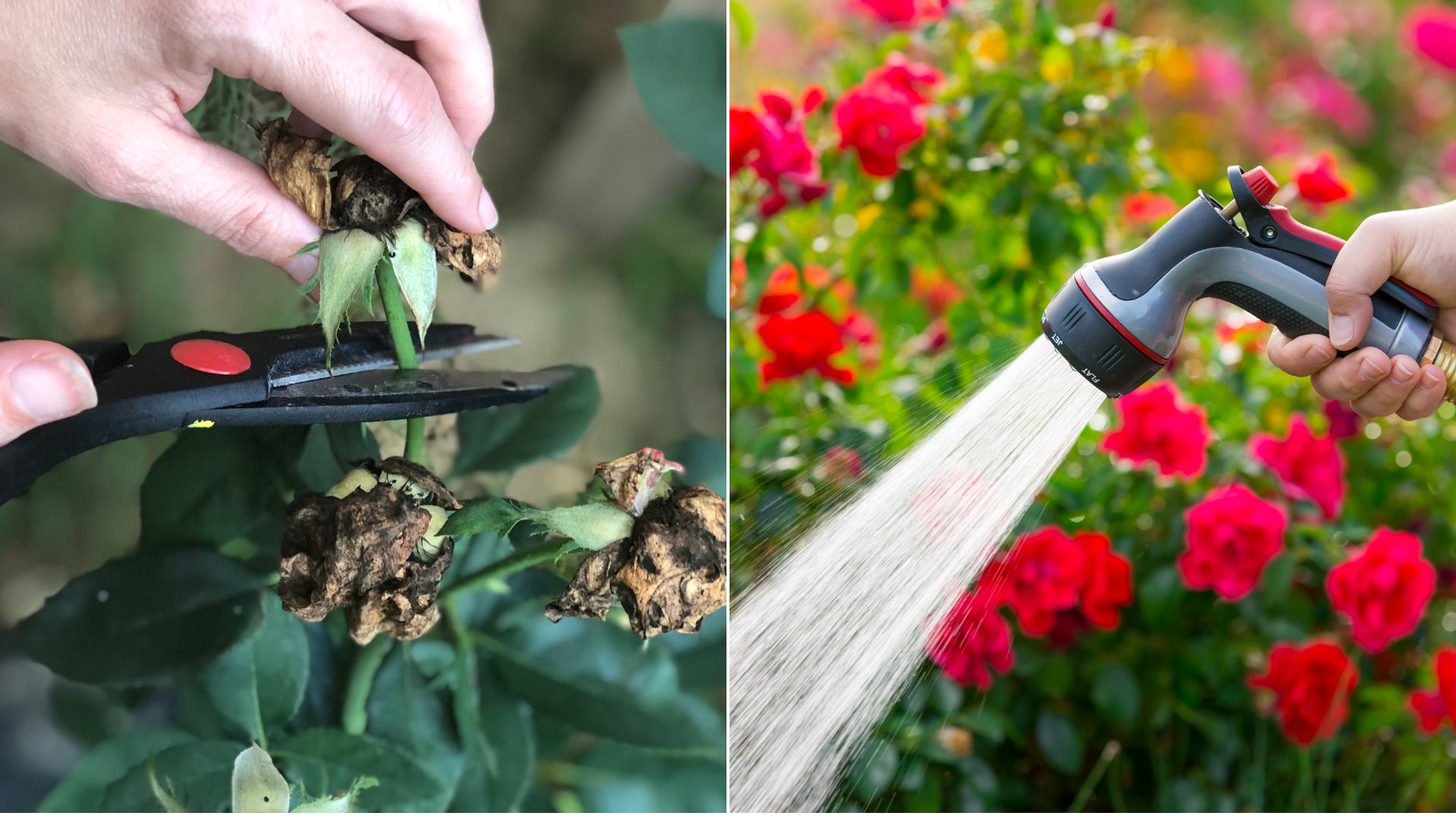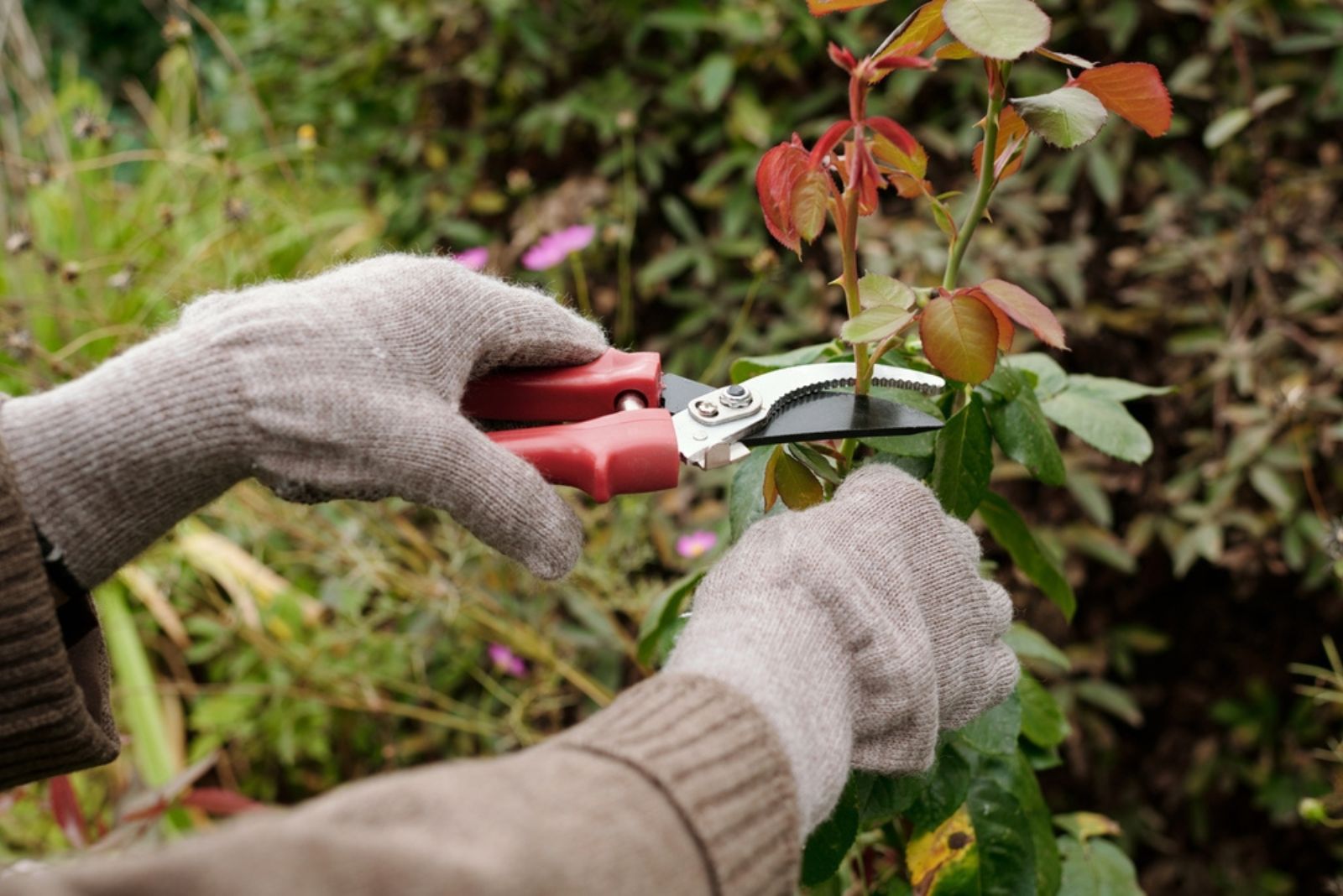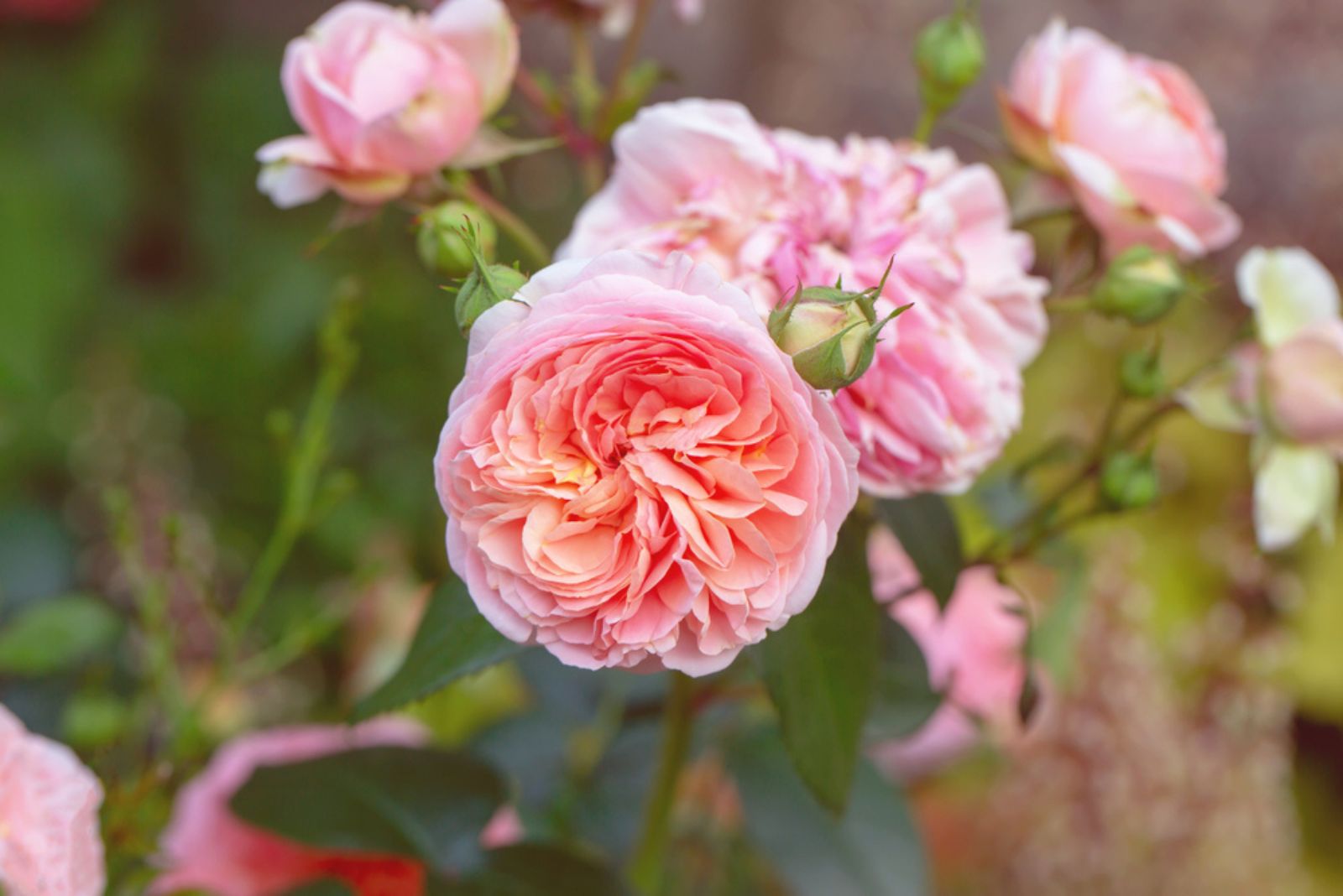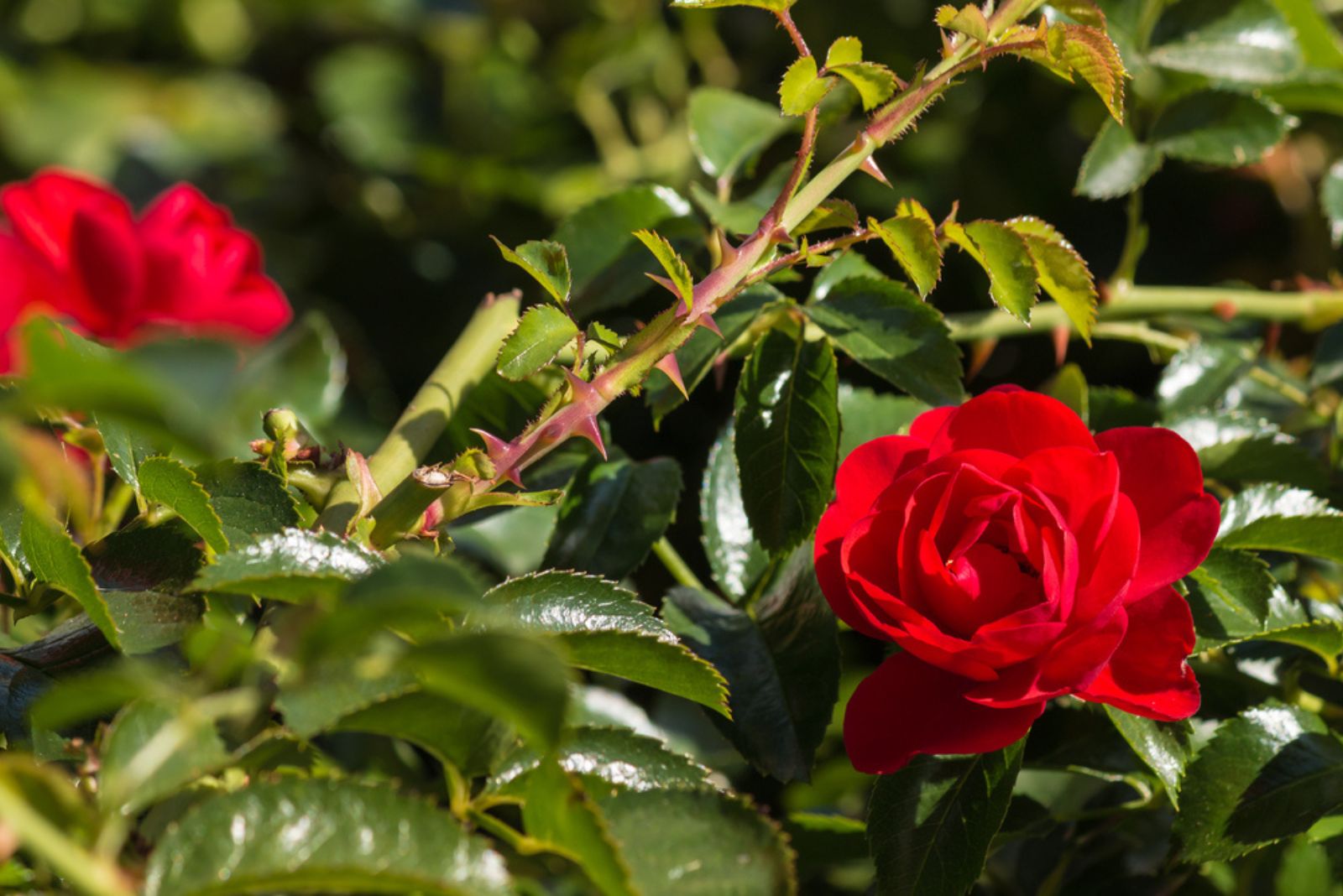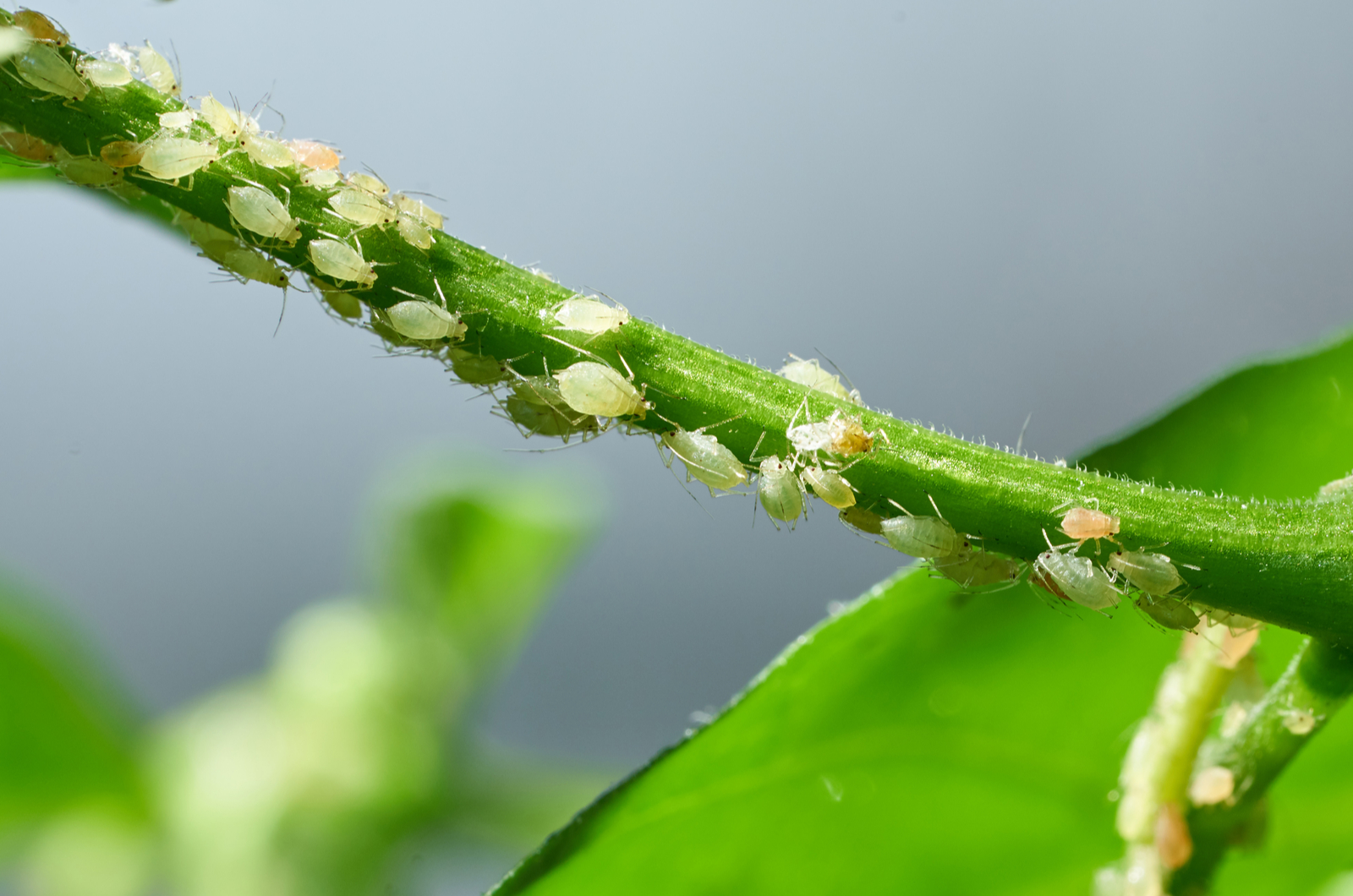Beautiful flowers and mesmerizing fragrances make these flowering shrubs one of the most wanted plants in gardens. They can truly bring beauty and elegance to any outdoor space!
However, growing roses can be a bit challenging, especially for beginners. There are several common mistakes that many gardeners make when it comes to growing roses that can hinder their growth and overall health.
Luckily, all of these mistakes can easily be avoided if you provide proper plant care.
In this article, we are going to cover some common rose growing mistakes and how to avoid them. So, stay tuned!
1. Not Pruning Correctly
Just like any other plant, roses need pruning. Pruning is one of the proven strategies that will encourage more rose blooming in the season and is essential for maintaining the health and shape of your rose bushes.
Not pruning correctly can lead to overcrowding, weak growth, and decreased flower production.
First of all, it is important to know what type of roses you are growing because this will tell you the right time to prune them. Most of them need to be pruned in late winter or early spring.
Don’t cut more than an inch above the bud eye that faces outward since the goal is to allow sunlight to reach the buds that are about to bloom.
You should always clean your pruning shears before and after you are done pruning to prevent spreading pests and bacteria – simply sterilize them with bleach or alcohol. Don’t forget to sharpen your gardening tools as well!
2. Inadequate Watering
One of the common causes of wilted roses is overwatering. This means that you are giving your plants more water than they need, which causes the roots to suffocate and rot.
Two gallons of water twice a week is usually enough for these plants. However, if you live in a region where it rains a lot, then you should water your roses less.
Roses require regular and consistent watering, especially during hot and dry periods. Let the soil dry out between watering sessions. Simply feel the soil each time before watering.
You can do this by hand or get a soil moisture meter like this one from Amazon. Make sure to water them deeply and avoid getting the leaves wet. Wet foliage attracts diseases like powdery mildew and leaf spot.
Another factor that contributes to overwatering is poor soil drainage – we will get to that issue shortly!
3. Lighting Issues
Roses absolutely love full sunlight exposure – they require at least 6 hours of direct sunlight daily in order to grow and thrive. Although some rose types are suitable for shaded areas, most of them need sunlight for proper growth.
If they don’t get enough sunlight, the rose blooming stage would be affected and your roses wouldn’t produce as many blooms as they normally would.
In addition, insufficient lighting can affect the overall health of your roses, making them more susceptible to pests and diseases.
4. Bad Soil
Soil type also plays a crucial role in the rose plant care guide. The ideal soil for roses is rich, well-draining, and slightly acidic. Before planting roses, you can amend the substrate with compost, humus, or well-rotted manure.
These plants cannot tolerate being wet, therefore if your garden soil is thick clay, you should add some horticultural grit to make it more draining.
Mulching helps regulate soil temperature, suppress weeds, retain moisture, and also provide nutrients that encourage the healthy growth of your roses.
When it comes to fertilization, the best time to do so would be early spring. You can apply some slow-release fertilizer, or you can spread some compost or cow manure.
Additionally, if you planted bare root roses, hold off on starting to feed them until the leaves emerge. You can start feeding container-grown roses immediately.
Coffee grounds can also be used for roses since they are acidic and high in nitrogen. However, they shouldn’t be used as a sole nutrient source.
5. Not Deadheading
Not deadheading spent flowers is another common mistake that can affect the performance of your rose bushes. Deadheading promotes production of new flowers and prevents the plant from directing energy into seed production.
Choose a portion of the rose that is elevated above the leaves and has more than 5 leaflets. This kind of pruning is beneficial to mature roses while young branches are still weak and unable to produce a lot of flowers, so deadheading them might not be the best idea.
By regularly deadheading your roses, you can extend their blooming period and promote a more abundant display of flowers.
6. The Location Is Not Good
Since there are different types of roses, it is important to find the best location according to their needs. For instance, you can grow climbing roses in limited space where they can’t grow and spread properly.
Ideally, roses require about two or three feet of space to grow. You should also avoid windy areas that can result in wind-rock – this causes the plants to grow at peculiar angles, but it can also snap them off completely!
You might also consider adding some rose companion plants that can protect your roses from all kinds of pests and diseases.
If you need any more ideas, check out: 9 Captivating Ideas For Landscaping With Knock Out Roses
7. Control Pests & Diseases
When growing roses, it is very important to protect them from pests and diseases that would otherwise multiply and spread quickly, thus completely ruining your plants.
Spider mites, aphids, and Japanese beetles are the three most typical pests that attack roses. If the pest infestation is not too severe, you can easily get rid of them with neem oil or regular insecticides.
There are a variety of diseases that can affect these plants, but black spot and powdery mildew are the most prevalent. You should avoid soaking the foliage of your roses and improve air circulation by pruning.
You can either use fungicide or neem oil to get rid of fungal diseases.

